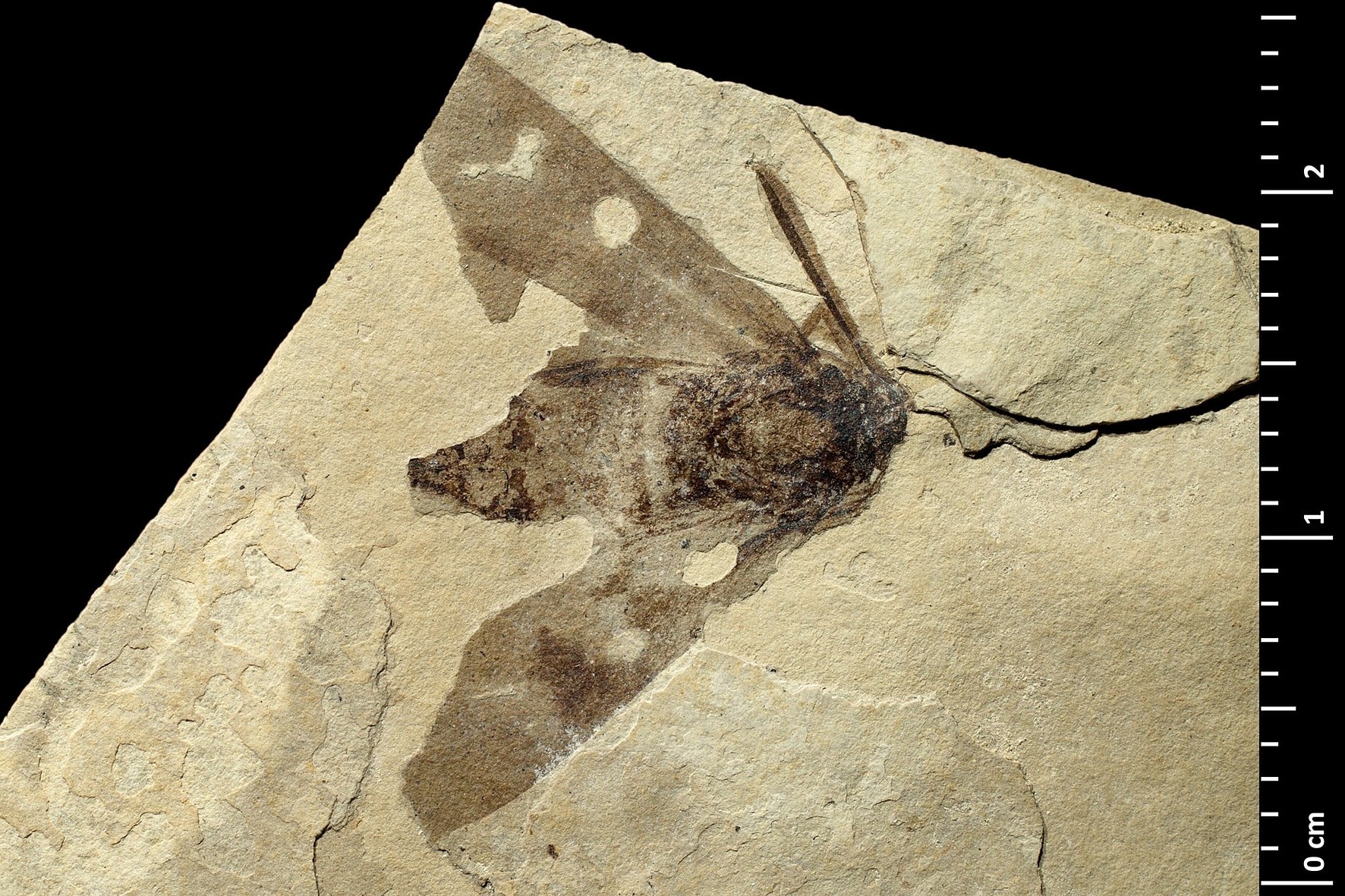 Human Origins and Anthropology
Human Origins and Anthropology
 Intelligent Design
Intelligent Design
 Paleontology
Paleontology
Fossil Friday: Zygaenid Moths — Molecular Clock vs Fossil Record

Last year I reported on the abrupt appearance of butterflies in the Tertiary period (Bechly 2023). Today we will take a look at the lepidopteran family Zygaenidae, which represents a globally distributed group of diurnal moths that are known as burnet or forester moths. Many species of this family have larvae that produce cyanide for protection against predators, and even the adults are remarkably resistant against potassium cyanide poison that is commonly used by butterfly collectors for killing jars, because the poisonous fumes usually kill fragile insects instantly and without damaging moisture.
Some assumed fossil specimens of Zygaenidae are known from Tertiary deposits, which are beautifully preserved and even show the distinctive color pattern (Naumann 1987, Fernández-Rubio & Nel 2000, McNamara et al. 2011). Today’s featured fossil is the holotype specimen of the moth Neurosymploca? oligocenica from the Lower Oligocene laminated limestones of the famous fossil insect locality Céreste in Southern France (Fernández-Rubio & Nel 2000). This fossil was considered one of the oldest fossil records of the family Zygaenidae, and is so similar to a living genus that it has even been tentatively placed within this modern taxon.
A New Study
Now, a new study has been published by Mirić et al. (2023) in the journal Systematic Entomology, which presented the first comprehensive higher level phylogeny of Zygaenidae with molecular clock estimates of the ages of the major lineages and a review of known zygaenid fossils (see Appendix 1). The authors suggest that “the lineage leading to the extant Zygaenidae appears to have diverged in Late Cretaceous (ca. 86 Ma), while the divergence among the subfamilies occurred several million years before the Cretaceous–Paleogene mass extinction event (ca. 66 Ma).” However, their review of the fossil record showed that all supposed fossils from the Paleogene cannot be confidently attributed to this family, which includes the featured fossil of which the authors said that “a robust identification of the specimen as a zygaenid moth is not possible.” According to the new study, “the earliest fossil evidence of the family dates to the Early Miocene”, which is only 20-16 million years ago. This material was found at the Randecker Maar locality in Southern Germany and is deposited in the collection of my former working place at the Natural History Museum in Stuttgart. They look almost indistinguishable from living zygaenids you can still find at the very same place today.
A Ubiquitous Mismatch
We can conclude that this family of moths is yet another confirmation of a general pattern in evolutionary biology, which is a consistent mismatch between molecular clock datings and the fossil record. This mismatch is statistically significant and cannot be explained away with inexpensive rescue devices such as ghost lineages, which for zygaenid moths would have to be postulated to be five times the length of their recorded history. To make things worse, we have many fossil insect localities from the Paleogene around the globe that could have easily preserved earlier representatives of these moths, but they are missing so that the common desperate appeal to an incomplete fossil record does not make much sense either.
The ubiquitous mismatch between molecular clocks and the fossil record clearly represents data to be explained, which tell us that something is fundamentally wrong with the current mainstream consensus. They are clearly missing something important, which I suggest to be the signal of intelligent design rather than undirected processes.
References
- Bechly G 2023. Fossil Friday: The Abrupt Origin of Butterflies. Evolution News April 14, 2023. https://evolutionnews.org/2023/04/fossil-friday-the-abrupt-origin-of-butterflies/
- Fernández-Rubio F & Nel A 2000. Neurosymploca? oligocenica a new fossil species of Lepidoptera Zygaenoidea of the Oligocene of Céreste (Lubéron, France). Boletín de la S.E.A. 27, 7–16. http://sea-entomologia.org/PDF/BOLETIN_27/B27-003-007.pdf
- McNamara ME, Briggs DEG, Orr PJ, Wedmann S, Noh H & Cao H 2011. Fossilized Biophotonic Nanostructures Reveal the Original Colors of 47-Million-Year-Old Moths. PLoS Biology 9 (11): e1001200, 1–8. DOI: https://doi.org/10.1371/journal.pbio.1001200
- Mirić M, Efetov KA, Tarmann GM, Chiocchio A, Heikkilä M, Wagner DL & Rota J 2024. First comprehensive higher level phylogeny of Zygaenidae (Lepidoptera) including estimated ages of the major lineages and a review of known zygaenid fossils. Systematic Entomology Early View 25 April 2024, 1–14. DOI: https://doi.org/10.1111/syen.12634
- Naumann CM 1987. On the phylogenetic significance of two miocene zygaenid moths (insecta, lepidoptera). Paläontologische Zeitschrift 61(3-4), 299–308. DOI: https://doi.org/10.1007/BF02985910


